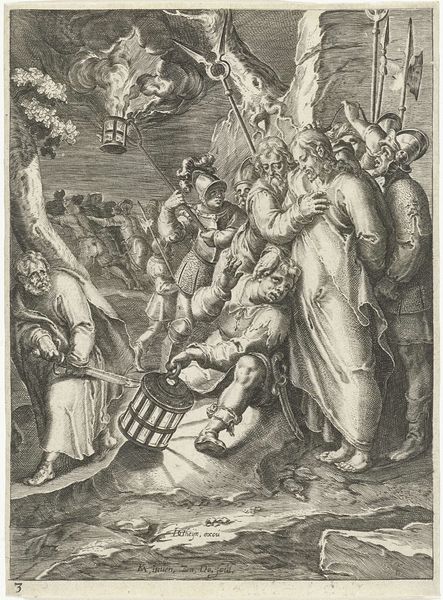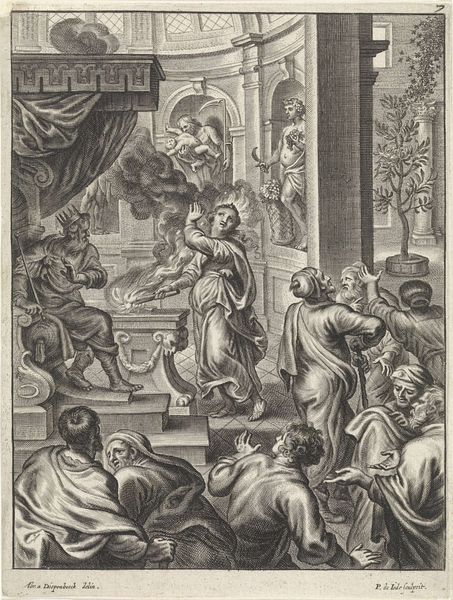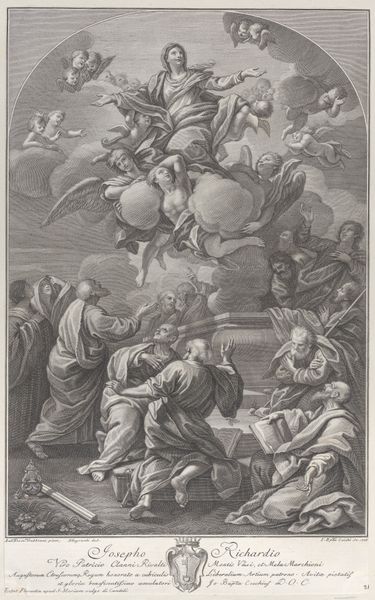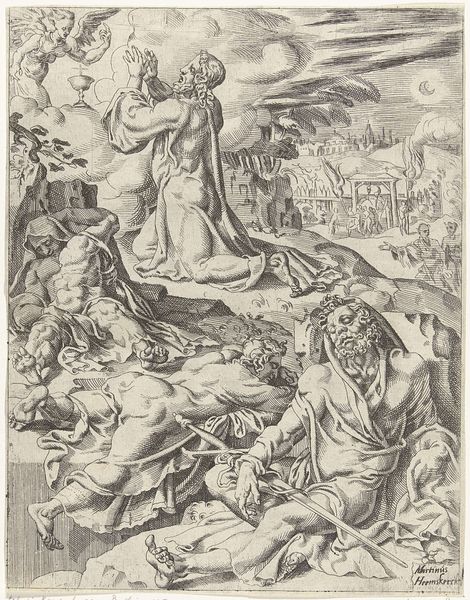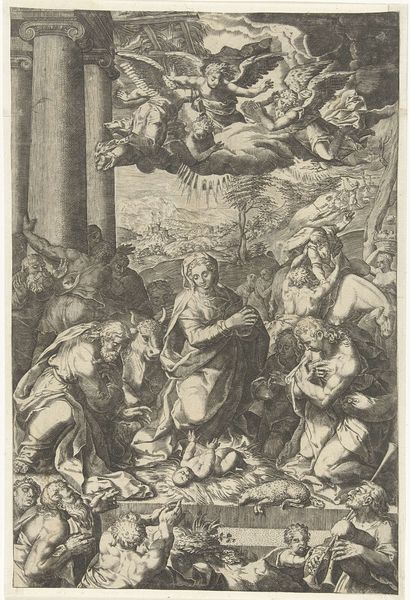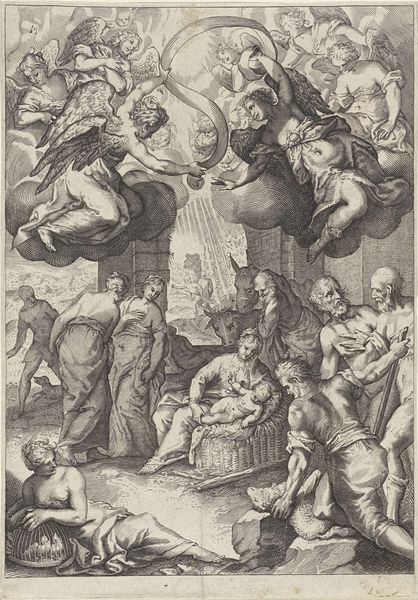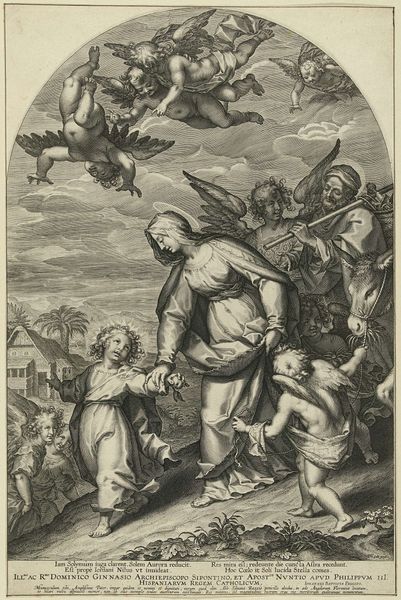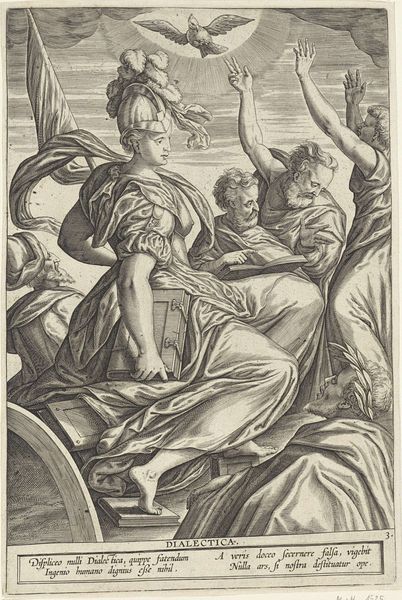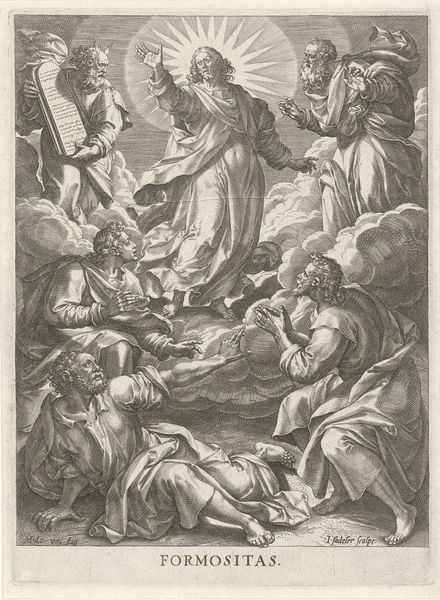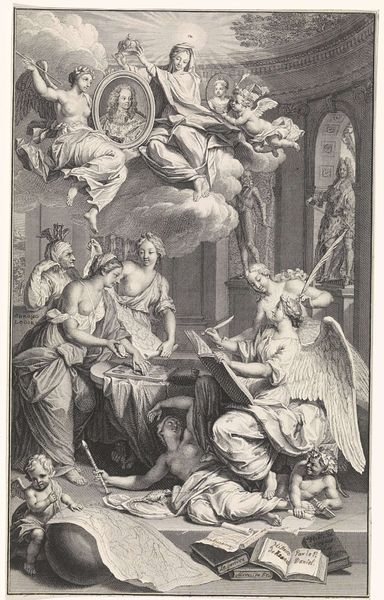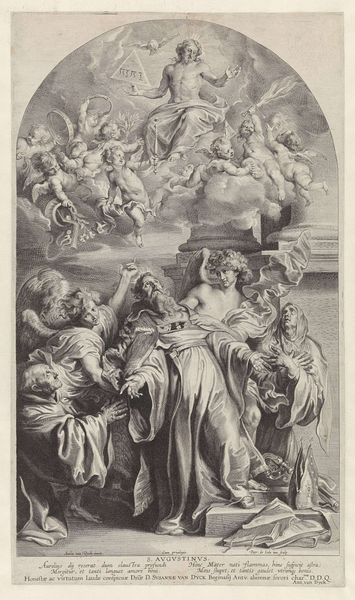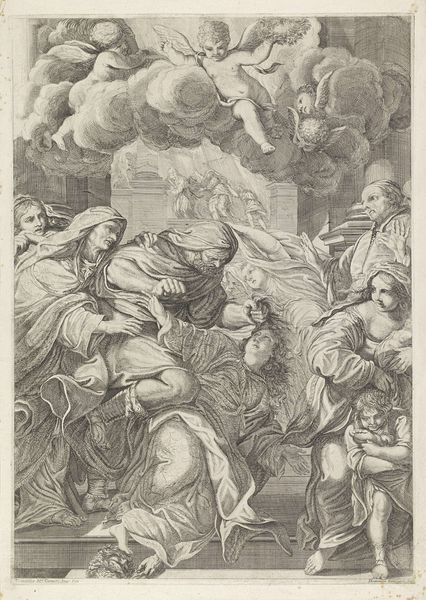
Roger Palmer, eerste graaf van Castlemaine, geknield voor paus Innocentius XI 1687
0:00
0:00
engraving
#
portrait
#
allegory
#
baroque
#
line
#
history-painting
#
engraving
Dimensions: height 252 mm, width 188 mm
Copyright: Rijks Museum: Open Domain
Curator: I’m struck by the drama in this engraving. The posture of Roger Palmer is almost theatrical. Editor: Indeed! This is Arnold van Westerhout's 1687 engraving, "Roger Palmer, eerste graaf van Castlemaine, geknield voor paus Innocentius XI". It captures a pivotal, yet complicated moment. It really reflects the religious and political tensions of the time, don’t you think? Curator: Absolutely. We see Castlemaine kneeling before the Pope, yes, but the allegorical figures are particularly compelling. I see the personification of perhaps Great Britain with that regal headdress! But what is the emotional tenor meant to convey, submission, conversion, or something else? Editor: It’s certainly layered. Castlemaine was an ambassador from James II to the Vatican, so this image symbolizes diplomatic efforts to reconcile England with the Catholic Church, although this endeavor, of course, existed against a backdrop of intense anti-Catholic sentiment in England, so one has to ask what impact this would have when circulated. The image of the face of James floating with cherubs has all the appearance of propaganda. Curator: The placement of that crown abandoned at the steps. Do you think that choice carries any symbolic weight? I'm captivated by these layers. Editor: Undeniably, yes. Abandoning the crown symbolizes James's commitment to religious reconciliation but at what cost to national sovereignty and identity? That hovering image of the king—does that imply divine right or, more subtly, a sort of puppet to religious forces? Curator: These kinds of details were precisely calibrated for the audiences of the era. Editor: The act of kneeling is, on its own, rich with religious symbolism, a gesture of humility, supplication. Yet in a political context like this, kneeling before the Pope—the earthly leader of the Catholic Church—takes on a charged significance. Whose power dynamic are we examining here? What is to be read into it for the viewers, both Catholic and Protestant? Curator: It sparks my interest, too, regarding the history of such gestures in diplomatic imagery. To kneel isn't merely physical but deeply psychological and culturally freighted, implying recognition of superior authority. What was the understanding and use of gestures like kneeling in visual narratives across religious and national divides, throughout different periods? Editor: Right, this print acts as both a record of, and a participant in, complex historical circumstances. Its symbolism begs so many interesting contemporary considerations. Curator: Considering those questions about identity and cultural performance certainly highlights a complex interaction of faith, politics, and image-making practices. Editor: A great engraving is worth far more than a thousand words. It’s a moment of suspended animation from a past, alive.
Comments
No comments
Be the first to comment and join the conversation on the ultimate creative platform.
